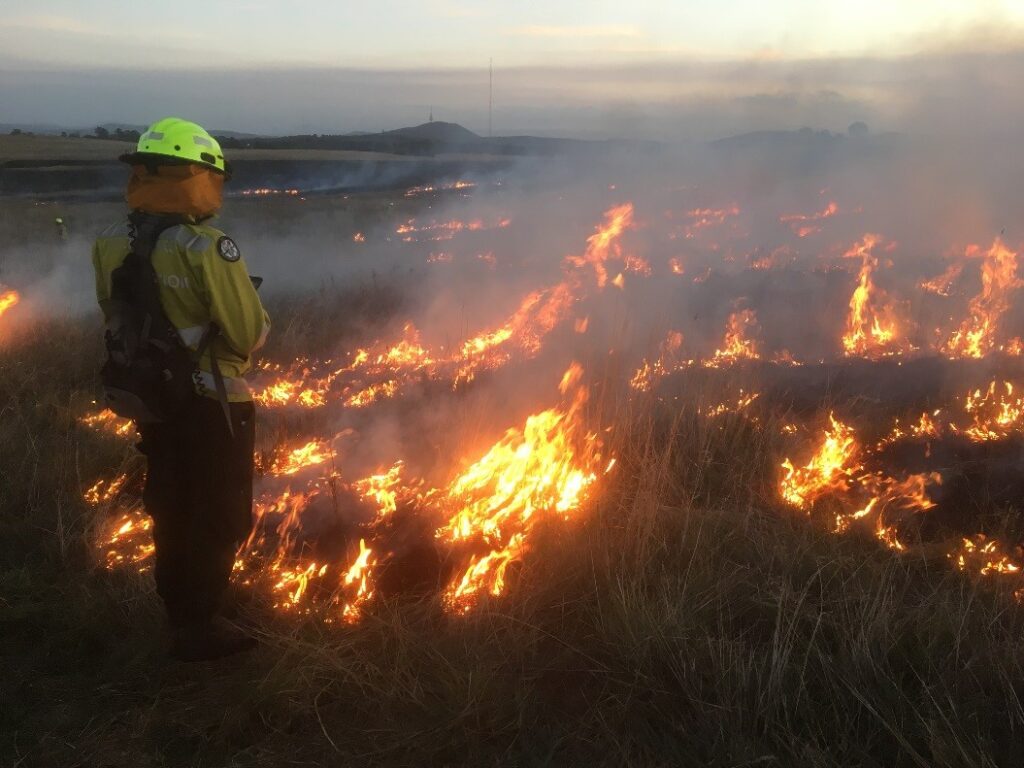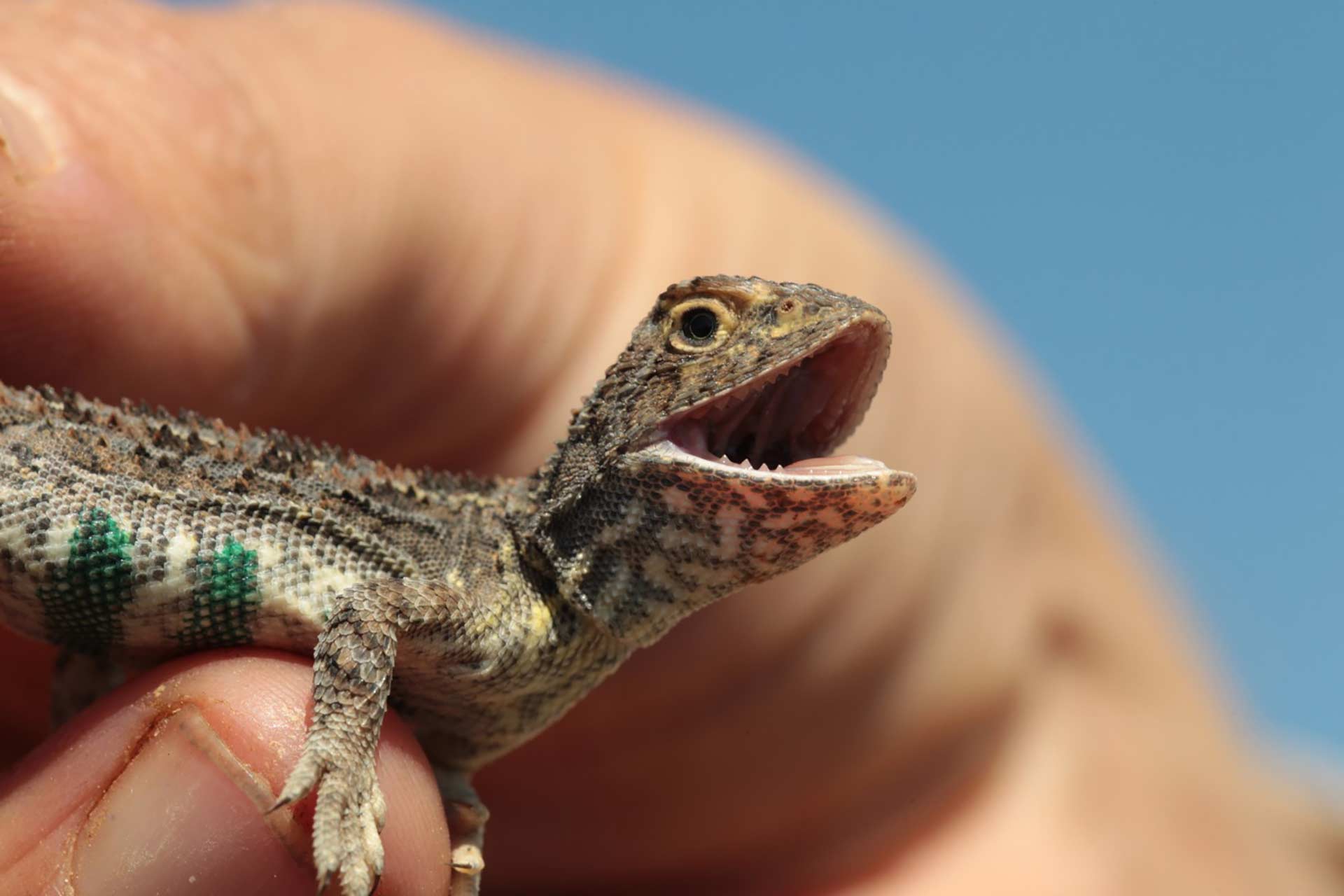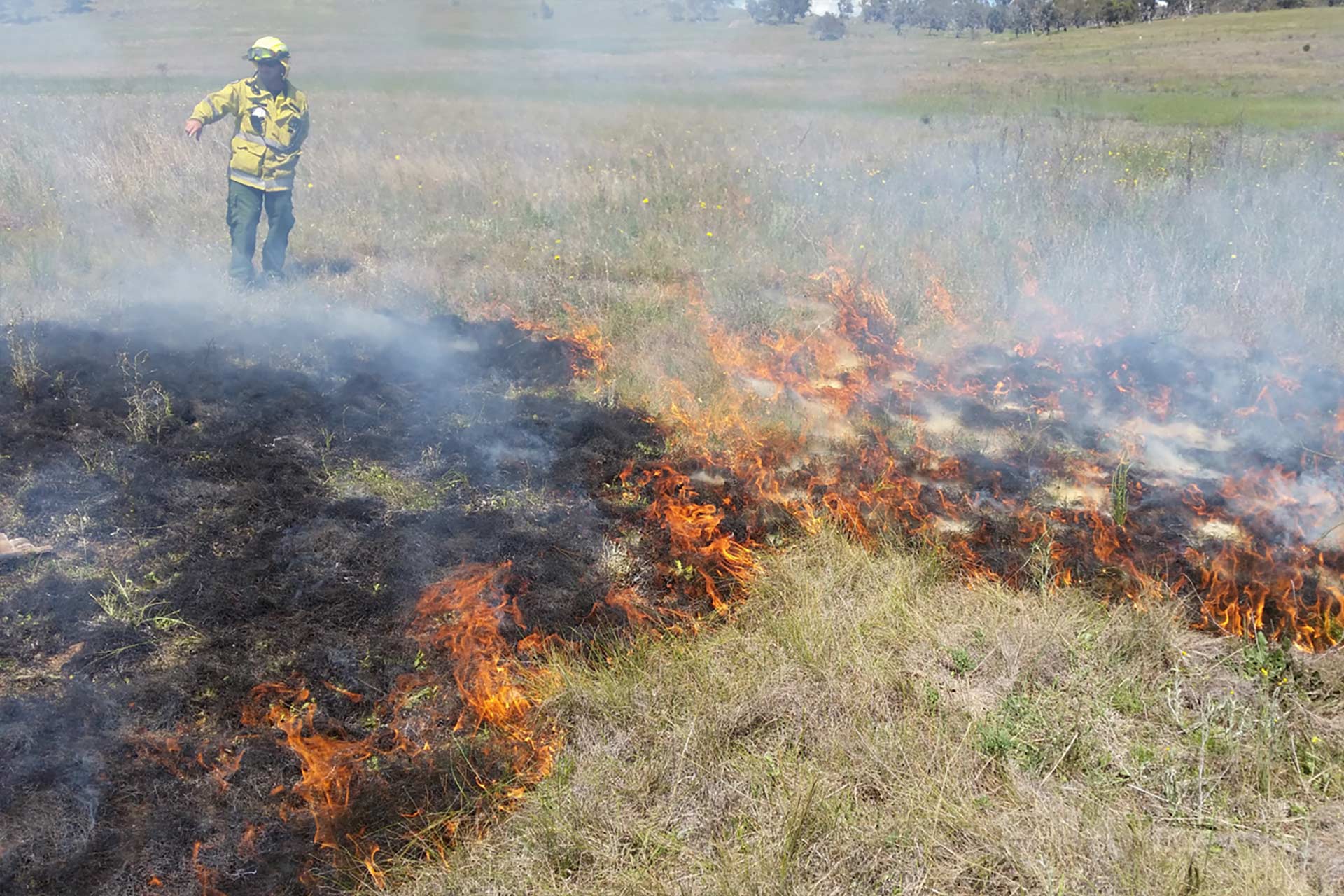Bushfires and controlled burns
Fires are a natural part of the Australian landscape. Many native plants burn readily, and fire is vital for the health of numerous native species and ecosystemsA collection of interacting living and non-living things. A More. The ACT landscape has evolved with fire. Aboriginal people developed a sophisticated understanding and use of fire to manage land and resources and reduce bushfireA fire that burns in grass, bush or woodland and can threate More risk (see Ngunnawal Country section).

A bushfireA fire that burns in grass, bush or woodland and can threate More is an unplanned fire that burns in grass, bush or woodland and can have devastating impacts on people, property, plants and the environment. Fires can harm water quality in rivers, catchmentsAn area of land on which rain falls, this land then helps to More and water storages. The smoke from bushfiresA fire that burns in grass, bush or woodland and can threate More and controlled burnsAlso known as prescribed or hazard reduction burns, involves More increases air pollution, especially airborne particles and summer smog. These pollutants can affect people, especially those with asthma and breathing problems.
The ACT has a high risk of bushfiresA fire that burns in grass, bush or woodland and can threate More. There are large areas of forest in the Namadgi National Park, Tidbinbilla Reserve and the Lower Cotter CatchmentAn area of land on which rain falls, this land then helps to More. Canberra suburbs are also at risk of fire due to bordering bushland, grassland and forests of the Canberra Nature Park.
BushfiresA fire that burns in grass, bush or woodland and can threate More need fuel, oxygen and an ignition source to start and spread. The fire intensity and speed of spread depends on air temperature, the amount of fuel (such as fallen bark, leaf litter and small branches) and the moisture in it, wind speed and slope angle. The higher the air temperature, the more likely it is that a fire will start or continue to burn.
Managing fire risk and ecosystem health
Reducing undergrowth can help manage bushfireA fire that burns in grass, bush or woodland and can threate More severity. The ACT Parks and Conservation Service do this through controlled burnsAlso known as prescribed or hazard reduction burns, involves More, also called prescribed or hazard reduction burns. Experienced fire managers carefully light fires in planned areas when weather conditions are suitable, usually in spring and autumn. Controlled burnsAlso known as prescribed or hazard reduction burns, involves More help protect homes, buildings and farms, and Canberra’s water supply. They also create fire breaks that help prevent bushfiresA fire that burns in grass, bush or woodland and can threate More spreading.
But it is vital to ensure ecosystemA collection of interacting living and non-living things. A More and biodiversityThe variety of all life and living processes in the environm More outcomes are considered before conducting fuel reduction burns so that ecologically appropriate burning is undertaken. That’s because if plants are burnt too frequently, they cannot grow to maturity and develop the seeds for future generations. But some plants need fire to grow their seeds and so too little fire can also be a problem.
Banksia life cycle
Banksia are plants with distinctive flower spikes and fruiting cones and heads. There are over 100 Banksia species. All but one occur naturally only in Australia. Woody capsules protect Banksia seeds from fire. Once the fire has passed, the plant releases seeds to the forest floor, which is full of nutrients.
Research on the life-cycle of one of these plants, Banksia spinulosavar cunninghamii (Hairpin Banksia), is helping fire managers preserve plant diversity in forests when doing controlled burnsAlso known as prescribed or hazard reduction burns, involves More.
This species takes a long time to produce seed, so it suffers if burnt too often. There must be enough time between fires for plants to mature and produce sufficient seed, and for enough seedlings to survive. Fire intervals of at least 15 years allow Hairpin Banksia populations to maintain an adequate seed source.

Saving lizards
Controlled burnsAlso known as prescribed or hazard reduction burns, involves More can improve the health of ecosystemsA collection of interacting living and non-living things. A More and biodiversityThe variety of all life and living processes in the environm More that depend on fire for regeneration and regrowth. The Grassland Earless Dragon is a small species of dragon lizard thought to be extinct until its rediscovery in the early 1990s. The endangered animals live in patches of natural grassland in the ACT, and just across the NSW border in Queanbeyan. They use burrows for shelter, temperature regulation, and to lay their eggs in spring.

There was a decline in the number of dragon lizards after above-average rainfall from 2013 to 2015 changed their grassland habitat. To improve the habitat, the ACT Government ran a large-scale ecological burning program over more than 50 hectares of the grasslands. These burns opened up the vegetation, and the dragon lizards soon re-colonised the areas that had been burnt.

Fire danger ratings
Every day during the bushfireA fire that burns in grass, bush or woodland and can threate More season, fire services throughout Australia produce a fire danger rating. The rating shows how a fire is likely to behave if it started on that day. The fire danger rating is represented by different colours. Green, for example, represents low to moderate fire danger risk. Red represents extreme fire danger risk.
Fire services determine the fire danger rating from a fire danger index, which assesses the potential severity of bushfireA fire that burns in grass, bush or woodland and can threate More given the predicted conditions. The index is a measure of how difficult it would be to contain the fire, as well as the risk to community, property and landscape.
The Bureau of Meteorology calculates the fire danger index from forecast air temperature, relative humidity and wind speed, along with drought conditions and soil moisture levels.
A fire danger index of 1 means a very low risk of fire occurring, and that it will be easy to control. A fire danger index of 100 means that fires may be so severe that control will be virtually impossible.
Elevated fire danger conditions (severe, extreme or catastrophic) occur when the fire danger index is greater than 50. Elevated fire danger conditions are uncommon in the ACT, averaging fewer than three days a year, usually in January. However, in the future, climate change is expected to increase both the average and severe fire danger index.



